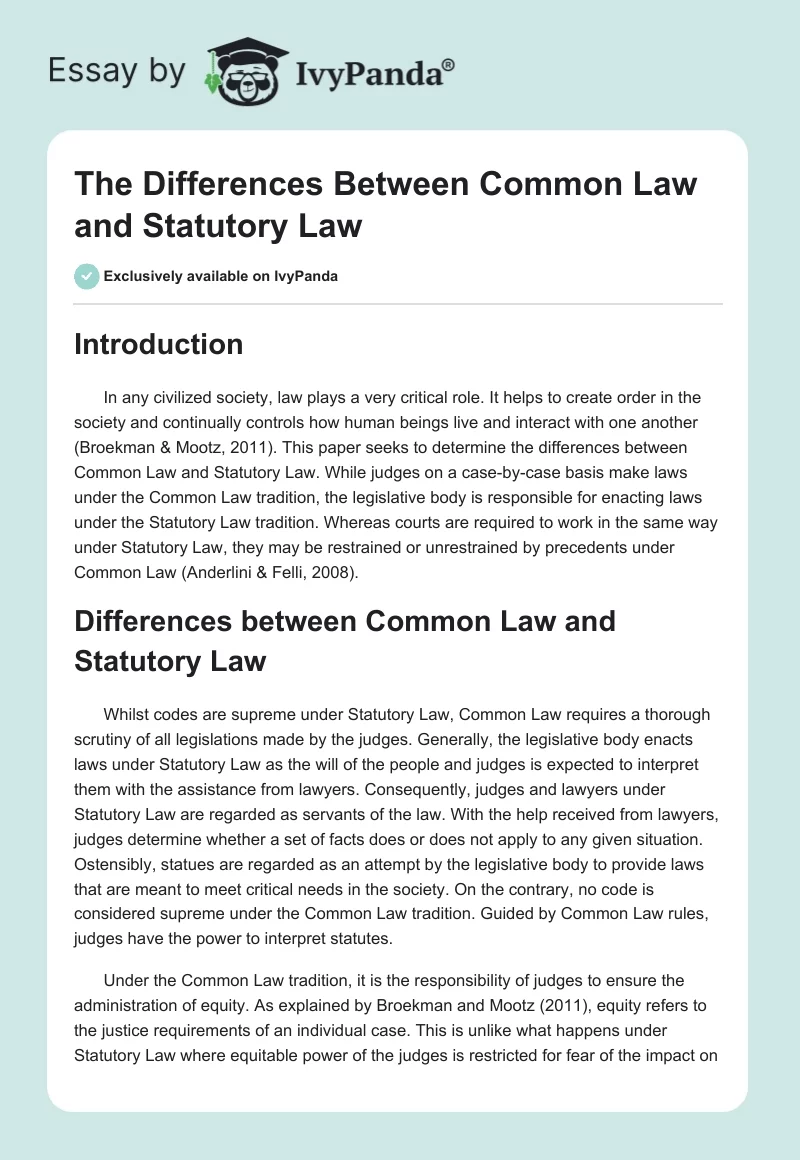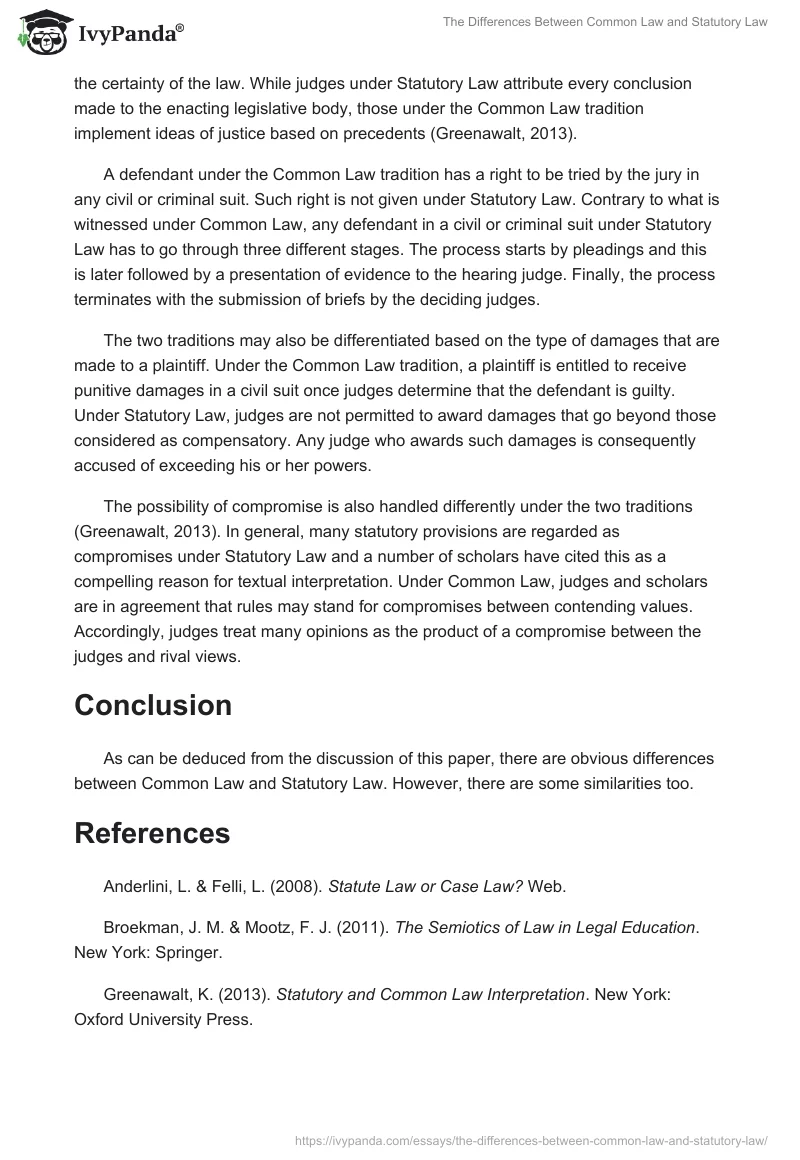Introduction
In any civilized society, law plays a very critical role. It helps to create order in the society and continually controls how human beings live and interact with one another (Broekman & Mootz, 2011). This paper seeks to determine the differences between Common Law and Statutory Law. While judges on a case-by-case basis make laws under the Common Law tradition, the legislative body is responsible for enacting laws under the Statutory Law tradition. Whereas courts are required to work in the same way under Statutory Law, they may be restrained or unrestrained by precedents under Common Law (Anderlini & Felli, 2008).
Differences between Common Law and Statutory Law
Whilst codes are supreme under Statutory Law, Common Law requires a thorough scrutiny of all legislations made by the judges. Generally, the legislative body enacts laws under Statutory Law as the will of the people and judges is expected to interpret them with the assistance from lawyers. Consequently, judges and lawyers under Statutory Law are regarded as servants of the law. With the help received from lawyers, judges determine whether a set of facts does or does not apply to any given situation. Ostensibly, statues are regarded as an attempt by the legislative body to provide laws that are meant to meet critical needs in the society. On the contrary, no code is considered supreme under the Common Law tradition. Guided by Common Law rules, judges have the power to interpret statutes.
Under the Common Law tradition, it is the responsibility of judges to ensure the administration of equity. As explained by Broekman and Mootz (2011), equity refers to the justice requirements of an individual case. This is unlike what happens under Statutory Law where equitable power of the judges is restricted for fear of the impact on the certainty of the law. While judges under Statutory Law attribute every conclusion made to the enacting legislative body, those under the Common Law tradition implement ideas of justice based on precedents (Greenawalt, 2013).
A defendant under the Common Law tradition has a right to be tried by the jury in any civil or criminal suit. Such right is not given under Statutory Law. Contrary to what is witnessed under Common Law, any defendant in a civil or criminal suit under Statutory Law has to go through three different stages. The process starts by pleadings and this is later followed by a presentation of evidence to the hearing judge. Finally, the process terminates with the submission of briefs by the deciding judges.
The two traditions may also be differentiated based on the type of damages that are made to a plaintiff. Under the Common Law tradition, a plaintiff is entitled to receive punitive damages in a civil suit once judges determine that the defendant is guilty. Under Statutory Law, judges are not permitted to award damages that go beyond those considered as compensatory. Any judge who awards such damages is consequently accused of exceeding his or her powers.
The possibility of compromise is also handled differently under the two traditions (Greenawalt, 2013). In general, many statutory provisions are regarded as compromises under Statutory Law and a number of scholars have cited this as a compelling reason for textual interpretation. Under Common Law, judges and scholars are in agreement that rules may stand for compromises between contending values. Accordingly, judges treat many opinions as the product of a compromise between the judges and rival views.
Conclusion
As can be deduced from the discussion of this paper, there are obvious differences between Common Law and Statutory Law. However, there are some similarities too.
References
Anderlini, L. & Felli, L. (2008). Statute Law or Case Law? Web.
Broekman, J. M. & Mootz, F. J. (2011). The Semiotics of Law in Legal Education. New York: Springer.
Greenawalt, K. (2013). Statutory and Common Law Interpretation. New York: Oxford University Press.


